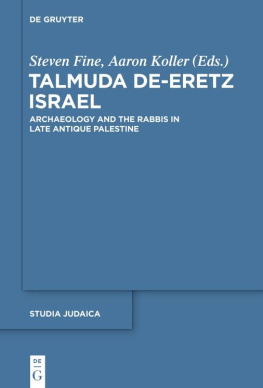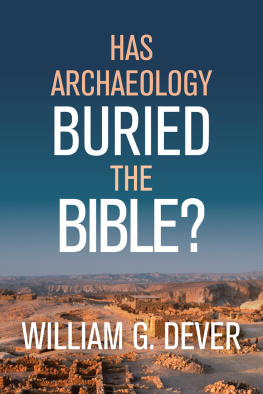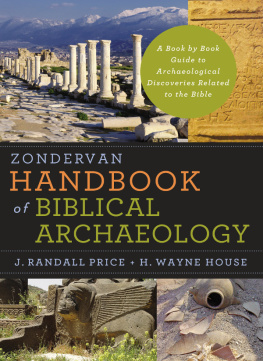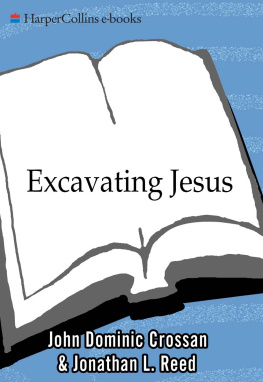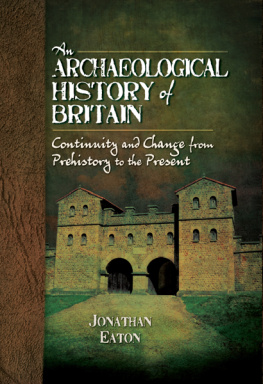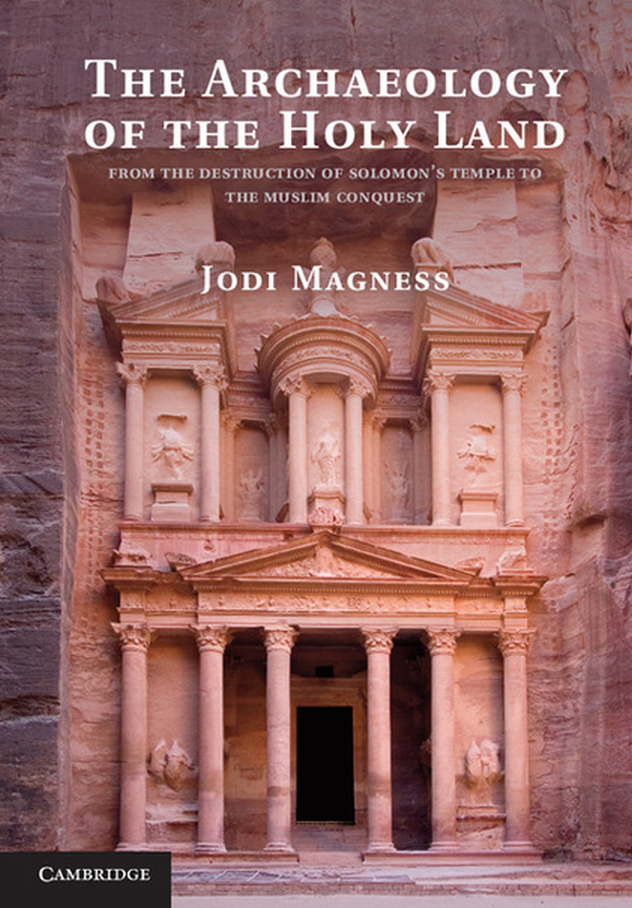
The Archaeology of the Holy Land
This book provides an introduction to the archaeology and history of ancient Palestine modern Israel, Jordan, and the Palestinian territories from the destruction of Solomons temple in 586 B.C.E. to the Muslim conquest in 640 C.E. Special attention is paid to the archaeology of Jerusalem and to the late the Second Temple period, that is, the time of Herod the Great and Jesus. For each period, the book offers historical background for the Mediterranean world, the ancient Near East and Palestine. Major sites such as Masada, Caesarea Maritima, and Petra are examined in archaeological and historical detail, along with the material culture
coins, pottery, glass, and stone vessels typical of each period. This book provides a thorough overview of the archaeology of this historically rich part of the world.
Jodi Magness is the Kenan Distinguished Professor for Teaching Excellence in Early Judaism in the Department of Religious Studies at the University of North Carolina at Chapel Hill. She is the author and editor of several books, including Stoneand Dung, Oil and Spit: Jewish Daily Life in the Time of Jesus (2011) ; The Archaeologyof the Early Islamic Settlement in Palestine (2003); and The Archaeology of Qumranand the Dead Sea Scrolls (2002).

The Archaeology of the
Holy Land
From the Destruction of Solomons
Temple to the Muslim Conquest
Jodi Magness
University of North Carolina, Chapel Hill
cambridge university press
Cambridge, New York, Melbourne, Madrid, Cape Town,
Singapore, Sao Paulo, Delhi, Mexico City
Cambridge University Press
32 Avenue of the Americas, New York, NY 10013-2473, USA
www.cambridge.org
Information on this title: www.cambridge.org/9780521124133
C
Jodi Magness 2012
This publication is in copyright. Subject to statutory exception
and to the provisions of relevant collective licensing agreements,
no reproduction of any part may take place without the written
permission of Cambridge University Press.
First published 2012
Printed in the United States of America
A catalog record for this publication is available from the British Library.
Library of Congress Cataloging in Publication Data
Magness, Jodi.
The archaeology of the Holy Land : from the destruction of Solomons Temple to the Muslim conquest / Jodi Magness.
p. cm.
Includes index.
ISBN 978-0-521-19535-5 (hardback)
1. Palestine Antiquities. 2. Bible Antiquities. 3. Excavations (Archaeology)
Palestine. I. Title.
DS111.M324 2012
933dc23
2011050688
ISBN 978-0-521-19535-5 Hardback
ISBN 978-0-521-12413-3 Paperback
Cambridge University Press has no responsibility for the persistence or accuracy of URLs for external or third-party Internet Web sites referred to in this publication and does not guarantee that any content on such Web sites is, or will remain, accurate or appropriate.
To Jim, with love
CONTENTS
page
vii
Contents
viii
LIST OF ILLUSTRATIONS
ix
List of Illustrations
x
List of Illustrations
Remains of the Hadrianic gate at the
xi
List of Illustrations
xii
PREFACE
For more than twenty years I have wanted to write this book. Thats how long I have been teaching the material covered here as an introductory-level course to undergraduate students. Over the years, repeated proposals that I submitted to various presses were rejected on the grounds that there was not enough demand to make such a textbook profitable. Therefore, I am grateful to Beatrice Rehl at Cambridge University Press for offering me a contract. I also thank Mary Robinson-Mohr and Jason Staples for their helpful comments on an earlier draft of this manuscript.
I got the time I needed to write this book thanks to a Chapman Family Faculty Fellowship at the Institute for the Arts and Humanities (IAH) at the University of North Carolina at Chapel Hill. The research fund awarded with the fellowship paid for the reproduction rights and preparation of many of the images. My work on the book was enriched by weekly meetings with the other Fellows at the IAH during the fall of 2010. I also wish to thank the faculty and staff of the Department of Religious Studies and Dean William Andrews at UNC-Chapel Hill for their support, including granting me a leave of absence for the 20102011
academic year.
I am grateful to the many friends and colleagues who generously granted
reproduction permission or provided the images that are a key component of this book, including Todd Bolen (BiblePlaces.com), Felicity Cobbings (Palestine Exploration Fund), Gwyn Davies, Hillel Geva (Israel Exploration Society), Gabi Laron (Hebrew University Institute of Archaeology), Leen Ritmeyer, Ronny Reich, Zev Radovan, Hershel Shanks (Biblical Archaeology Society), Zeev Weiss, and Jane Cahill West. I owe special thanks to Jeffrey Becker and Richard Talbert at the Ancient World Mapping Center at UNC-Chapel Hill, who prepared an
original series of maps for this book.
xiii
Preface
This book is informed by decades of learning from teachers, students, colleagues, friends, and family. Although it is impossible to acknowledge them all, I wish to remember some of those who are no longer with us: James A.
Sauer and Keith de Vries, who were my teachers and dissertation advisers at the University of Pennsylvania; my close friend and colleague Hanan Eshel; and my dear friends Tsvi (Harvey) Schneider and Ora Sinai. They had a lasting impact on my life and are deeply missed.
I am fortunate to have a loving and supportive family, including my parents, Herbert and Marlene Magness; my husband, Jim Haberman; and my nephew
Mike Miller. This book is dedicated to Jim, for whose unconditional love and companionship I am grateful. Jim works as the photographer on my excavations, and he gets the credit for preparing many of the illustrations in this book as well.
xiv
one
INTRODUCTION
In the heart of the ancient Near East (modern Middle East), at a crossroads between once-mighty powers such as Assyria to the east and Egypt to the south, is a tiny piece of land roughly the size of New Jersey that is as contested as it is sacred. One cannot even name this territory without sparking controversy.
Originally called Canaan after its early inhabitants (the Canaanites), it has since been known by various names. To Jews this is Eretz Israel (the Land of Israel), the Promised Land described by the Hebrew Bible as flowing with milk and honey.
To Christians it is the Holy Land where Jesus Christ the messiah, or anointed one was born, preached, and offered himself as the ultimate sacrifice. Under the Greeks and Romans, it was the province of Judea, a name that hearkened back to the biblical kingdom of Judah. After the Bar-Kokhba Revolt ended in 135 C.E., Hadrian renamed the province Syria-Palestina, reviving the memory of the long-vanished kingdom of Philistia. Under early Islamic rule the military district ( jund ) of Filastin was part of the province of Greater Syria (Arabic Biladal-Sham). In this book, the term Palestine is used to denote the area encompassing the modern state of Israel, the Hashemite kingdom of Jordan, and the Palestinian territories.
Next page

